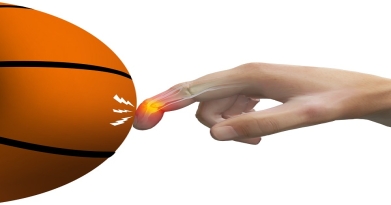
It has happened to all of us at some point. You’re playing sports and a ball glances off the tip of your finger. Or you reach for something and jam the tip of your finger. Typically there is a lot of swelling and discomfort afterwards. But when is a jammed finger something more than a sprain and needs to be evaluated by a doctor?
The finger is a brilliantly designed machine with tendons running on both sides that allow you to flex and extend at each joint. Covering those tendons is a sheath that allows smooth movement and pulleys that keep the tendons where they need to be for added mechanical advantage. So when you jam your finger there are a lot of structures that could be damaged.
Injuries can occur at any of these structures. Most injuries are soft tissue injuries that heal well without surgery or immobilization.
However, there are several symptoms that should raise your suspicion for a more serious underlying injury and may require evaluation:
Is your joint not sitting in a normal position?
If so, you may have an underlying dislocation or fracture that needs to be seen at the emergency room or urgent care center. Joints need to be in a normal anatomic position to prevent further damage and preserve function.
Can you flex and extend through each of your finger joints?
If not, you may have an injury to either one of the flexor tendons, extensor tendons, or bones that they attach to. This needs to be evaluated on an urgent basis as well, as the sooner it can be evaluated and repaired the better chance of avoiding a loss of function.
Barring any of the above symptoms, jammed fingers should reliably improve over the course of a few days with rest, icing for swelling, and anti-inflammatories for pain control. Depending on the location of the injury and the structure injured, your finger may need to be immobilized for a period of time. Immobilization can include taping the injured finger to an adjacent finger, a splint for the end of the injured finger to keep the joint extended, or a cast that extends to the forearm. Periods of immobilization vary depending on the structure injured.
Prompt assessment and treatment are the keys to ensuring that serious injuries do not result in any disability and and maximize the opportunity for a full return of function.









